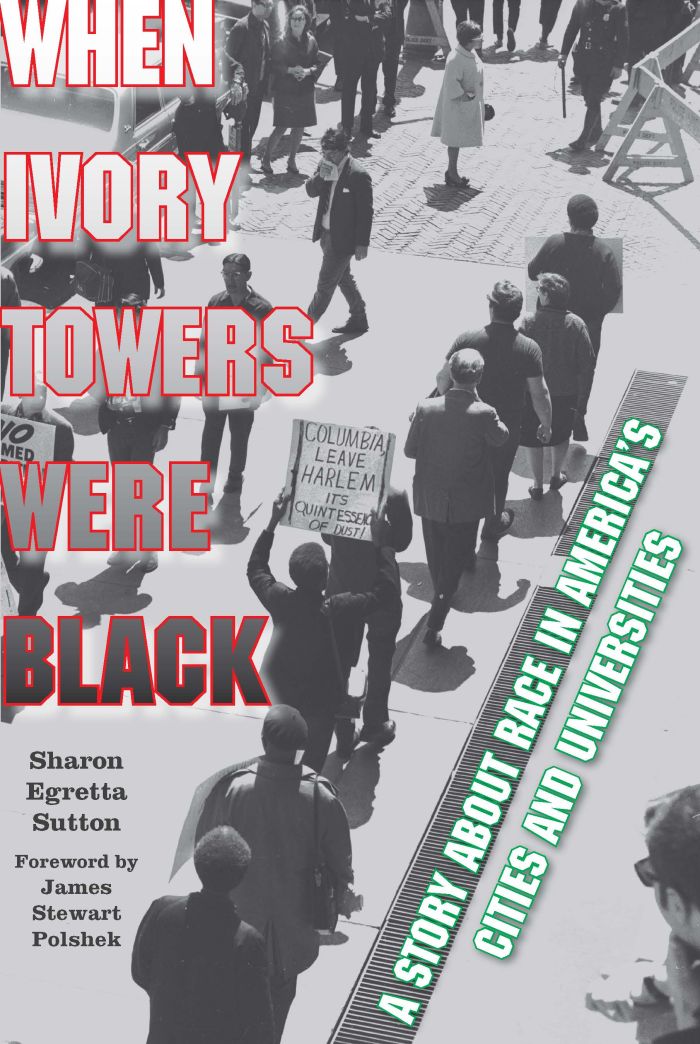When Ivory Towers Were Black
A Story about Race in America's Cities and Universities

This book can be opened with

When Ivory Towers Were Black lies at the potent intersection of race, urban development, and higher education. It tells the story of how an unparalleled cohort of ethnic minority students earned degrees from a world-class university. The story takes place in New York City at Columbia University’s School of Architecture and spans a decade of institutional evolution that mirrored the emergence and denouement of the Black Power Movement. Chronicling a surprisingly little-known era in U.S. educational, architectural, and urban history, the book traces an evolutionary arc that begins with an unsettling effort to end Columbia’s exercise of authoritarian power on campus and in the community, and ends with an equally unsettling return to the status quo.
When Ivory Towers Were Black follows two university units that steered the School of Architecture toward an emancipatory approach to education early along its evolutionary arc: the school’s Division of Planning and the university-wide Ford Foundation–funded Urban Center. It illustrates both units’ struggle to open the ivory tower to ethnic minority students and to involve them, and their revolutionary white peers, in improving Harlem’s slum conditions. The evolutionary arc ends as backlash against reforms wrought by civil rights legislation grew and whites bought into President Richard M. Nixon’s law-and-order agenda. The story is narrated through the oral histories of twenty-four Columbia alumni who received the gift of an Ivy League education during this era of transformation but who exited the School of Architecture to find the doors of their careers all but closed due to Nixon-era urban disinvestment policies.
When Ivory Towers Were Black assesses the triumphs and subsequent unraveling of this bold experiment to achieve racial justice in the school and in the nearby Harlem/East Harlem community. It demonstrates how the experiment’s triumphs lived on not only in the lives of the ethnic minority graduates but also as best practices in university/community relationships and in the fields of architecture and urban planning. The book can inform contemporary struggles for racial and economic equality as an array of crushing injustices generate movements similar to those of the 1960s and ’70s. Its first-person portrayal of how a transformative process was reversed can help extend the period of experimentation, and it can also help reopen the door of opportunity to ethnic minority students, who are still in strikingly short supply in elite professions like architecture and planning.
[Sutton] examines the development and unraveling of an experimental education initiative at Columbia University’s School of Architecture that arose out of the school’s 1968 student rebellions, aimed at recruiting of minority students and transforming the school’s curriculum into “humanistic, justice-oriented” education. . . The recollections of the alumni that infuse and inform the text. . . give the book value as an oral history."—Publishers Weekly
Sutton tells a story that has yet to be told: a time, an era, a passion, a hope, a tale recounted with the skill and energy of a mystery novel. She tells of young people who believed that the injustices they found on their college campuses also believed that they could be righted, that racism could be battled and defeated. When Ivory Towers Were Black encourages us to reflect on the dreams, hopes, battles and defeats as a way of measuring how far we have come—and how far there is yet to go.—Diane Ghirardo, University of Southern California
...an unusual hybrid of memoir, institutional history and broadside against the entrenched whiteness of the architecture profession in this country.—LA Times
The most inspiring of [this book’s] positions is an unwavering faith in the power of affirmative action as a means of changing the design professions and, consequently, the spaces they shape . . . A profession that reflects the diversity of the world it shapes requires something more ineffable: an open acknowledgement of persistent oppression combined with 'an amazing, almost breathless sense of possibility' (201). It is that breathless sense that distinguishes When Ivory Towers Were Black. It is clear that it enabled Sutton’s participation in this experiment, her success that followed, and her retelling of that story in the book, which can hopefully pass some of that optimism to its readers.—The Journal of Architectural Education
Sutton’s analysis critically examines the intersection of race, higher education, and urban development in a way that surely shows how the profession of architecture is equipped to and can aid in social justice initiatives around the country.—The Journal of African American History

